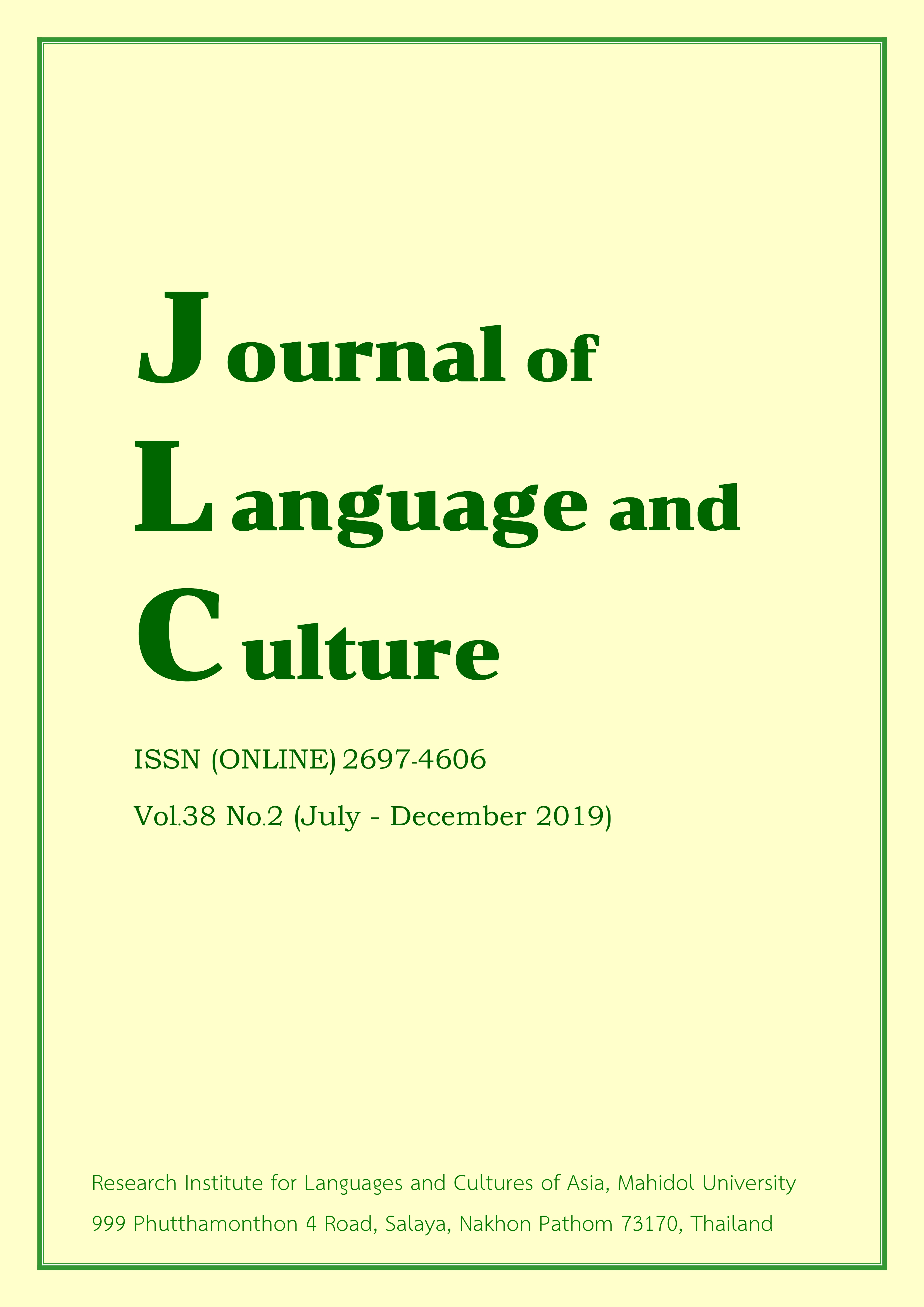The Journal of Language and Culture Volume 38 No.2 (July - December 2019) presents nine research papers in the fields of social sciences and humanities in Thailand, which address relevant issues related to language teaching and learning, linguistics, translation, community development, and cultural studies, which will be briefly highlighted as follows.
The first paper by Supaporn Kacharat finds out the role of the Chinese people in developing the Tha Chin River Basin by studying the stories of local Chinese people who pioneered the trade in Nakhon Pathom with their diligence and expertise enabling them to become successful entrepreneurs and strengthen the ethnic identity to the present.
Next, Sunit Hemanil examines the wisdom of traditional healers who cure patients through stepping on hot red steel in Ban Hin Tang in Udon Thani Province. The study reflects that the treatment has been accepted as valuable local wisdom which should be preserved and inherited for local culture in the Northeast of Thailand.
Thirdly, Sujinat Jitwiriyanont analyzes formant frequencies of Thai vowels and suggests vowel formant frequency normalization suitable for acoustic characteristics of Thai vowels. The study addresses the significance of a thorough examination of vowel formant frequencies of each language prior to vowel formant frequency normalization for studying vowel variation.
Next, Saranya Chuacharoensiri and Krittaya Akanisdha investigate the transfer of politeness in opinion utterances in medical context with regard to a case study of the Thai subtitles of Grey’s Anatomy. This study not only extends the knowledge of translation studies, but also promotes a better understanding for professional translators.
In the fifth paper, Charassri Jirapas explores the establishment of Thai language teaching institutions in China from 1946 to 2019 and the establishment of Thai Studies leading to the study of Thai language in China. The development of Thai language education can be adopted as a guideline for further collaborations of both Thai language teaching and Thai Studies.
Then, Pinyapat Peemmetasawad and Melada Sudajit-apa explores the development and use of EFL materials that specifically aim to encourage English communication for Grade 4 students at a non-tradition school in Bangkok. English language competency has become increasingly important for in Thailand while teaching approaches have shifted from instructional designs focusing strictly on grammar usage to task-based learning approach.
Nurulhusna Paramal contributes the seventh research paper that focuses on the Deep South of Thailand which features many distinct linguistic characteristics in that the vast majority of the population speaks Patani Malay language as the mother tongue. Against this background, the study applies theoretical frameworks of contact- and language interference to identify the phonological features of Patani Malay and Thai that interfere with English spoken by Patani Malay speaking elementary students.
As in the eighth paper, Jaruwan Ngamman provides guidelines for developing Thai-language open educational resources (OER) in Mathematics and Science for Basic Education in Thailand and analyzes key challenges faced during this process. Her analysis is based on interviews and surveys and shows that existing resources are insufficient and need further development for digital Thailand efficiently.
In the last paper of this issue, Sutraphorn Tantiniranat links her research to these ongoing developments. She points out that only limited attention has been paid to the notion of native-speakers cultures in English major programs at Thai universities.
In this issue, I am honored to have Dr. Alex Trupp, a senior lecturer at the School of Tourism and Hospitality Management at the University of South Pacific, Fiji and the editor-in-chief of the Austrian Journal of South-East Asian Studies (Scopus-indexed Q2) as a co-editor who has helped the development of this Journal towards an internationally-indexed status in the upcoming years. Thank you for all supports from our editorial board, reviewers, contributors, and readers to make this issue a successful. May we wish you a Merry Christmas and Happy New Year!
Published: 11-04-2020


